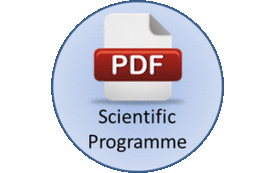
Guang Zhao
Chinese Academy of Sciences, China
Title: Biosynthesis of the platform chemical 3-hydroxypropionate
Biography
Biography: Guang Zhao
Abstract
3-Hydroxypropionate (3HP) is one of the top 12 value-added chemicals from biomass released by the US Department of Energy, serving as a precursor to a variety of commodity chemicals like acrylate and acrylamide, as well as a monomer of biodegradable plastic. To establish a sustainable way to produce these chemicals and materials, fermentative production of 3HP was thoroughly investigated in our lab. Firstly, a novel 3HP biosynthetic pathway employing malonyl-CoA as an intermediate was developed. Compared with other 3HP pathways, the malonyl-CoA route has some expected advantages, including broad raw material spectrum, redox neutral, and free of the cofactor. Secondly, the 3HP productivity was significantly improved by dissection of malonyl-CoA reductase (MCR, the key enzyme converting malonyl-CoA into 3HP) into two functional fragments, directed evolution of rate-limiting fragment MCR-C, carbon flux balancing and redirection toward 3HP biosynthesis. The 3HP production increased from 0.1g/L to 40.6g/L, about 50 times higher than that in the previous report. Furthermore, a series of 3HP-containing copolymers with fully controllable structures was directly synthesized using inexpensive carbon sources, differing from previously reported approaches based on the addition of precursors. The thermal and mechanical properties of copolymers dramatically changed depending on their structure and monomer ratios, which should widen their range of applications. Our study not only set up the sustainable route for production 3HP and its polymers but also established some new methods for metabolic engineerings, such as protein dissection and carbon flux redirection, which can be used in the biosynthesis of other promising chemicals and materials.

